Perplexed about how to build healthy smoothies? Look no further than my ultimate guide to making healthy smoothies. Through 25 years of creating and enjoying smoothie recipes, I've tried a thousand options and combinations and am here to share what I've learned with you. With so many considerations and options, best choices can be confusing. Downloadable PDF cheatsheet below!
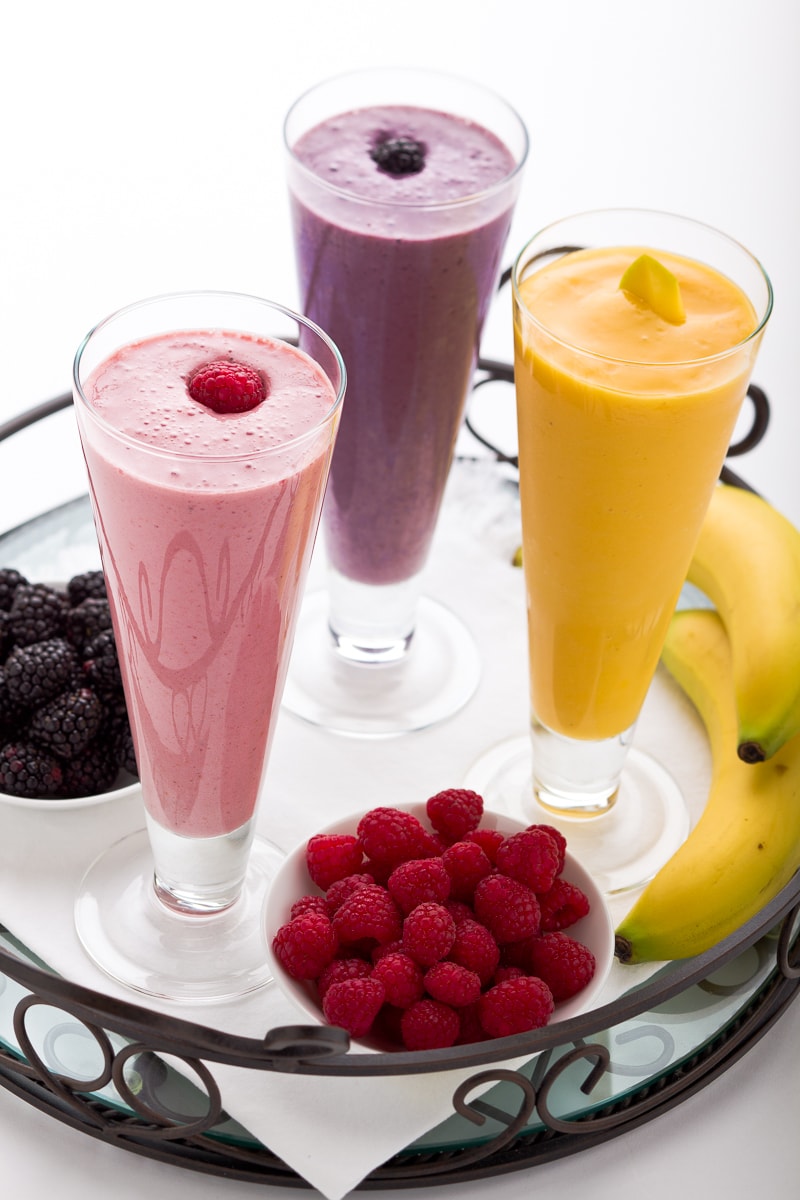
Smooth, creamy and bursting with nutrition, healthy smoothies are easy to make for breakfast and customizable for your nutritional and taste preference. Whirl ingredients together in a high-speed blender and enjoy.
We drink these almost every morning for breakfast. If I stick with drinking smoothies I feel good and my energy is high throughout the morning plus I get my day started with a good amount of protein and fiber.
If you are looking for a super way to start your day, try healthy protein smoothies. They work for a quick power lunch or post-workout too.
Jump to:
Tip #1: Choose the Right Base Liquid
A good basic smoothie recipe starts with the right base liquid. Here are great options:
- Homemade almond milk is a top choice. I do not strain mine when using it for smoothies. Why toss that delicious healthy pulp? If you're using it for other recipes requiring a more fluid milk, strain it with a nut milk bag to remove the solids. You can use boxed or refrigerated almond milk but read the labels carefully.
- Cashew milk: another easy one to make at home. Here's my recipe for cashew milk.
- Coconut Milk: creamy, delicious, and easily made in a minute with canned coconut milk. Skip the stuff at the store.
- Oat milk: as always, read the labels for a clean oat milk (there are some in the refrigerated case), or make your own.
- Hemp milk: the issues is shelf-stable brands have gums and additives. Make your own for pennies with organic hemp seeds, plus it is high protein.
- Coconut water: read labels for the lowest sugar or no sugar.
- Water: use filtered water for the cleanest option.
Two other common "milks" you might wonder about: soy milk and rice milk. Soy, and therefore soy milk, is a controversial ingredient whose health benefits are debated. One benefit is it's high-protein. One, negative, soy is a common food allergy or sensitivity and gives many people digestive upset.
Soy contains phytoestrogens (plant-based estrogens) which can mimic hormones and cause disruptions. As with many things in nutrition, studies present conflicting conclusions. The good thing is there are many other healthy options. If you enjoy soy milk, be sure to buy organic.
What about rice milk? The issue with store bought rice milk is that rice naturally absorbs arsenic from the ground as it grows, so rice and rice products can contain the toxic metal arsenic. Tests by Consumer Reports found that many rice products at the store contain arsenic at worrisome levels. As a person who has battled heavy metal toxicity, this concerns me.
Chef's Note: If you love rice as we do, there is a way to cook it to reduce arsenic. Here's how to cook rice to reduce natural arsenic.
Make your own coconut milk using organic canned coconut milk. It tastes terrific, is always in the pantry and you can use it half and half with water or vary the water ratio to meet your dietary need. Want another fun option? Try homemade pumpkin seed milk with it's love pale green color and nutty flavor.
Be sure to read labels carefully and buy unsweetened, unflavored, milks to avoid added sugars and unwelcome additives like carrageenan. If you buy a flavored milk, be sure it's a real flavor, as something labeled "natural flavor" may be something not so natural.
Healthline reports in this article that "the original source of natural flavors must be plant or animal material. However, natural flavors can be highly processed and contain many chemical additives. In fact, in some cases natural flavors aren't much different from artificial flavors in terms of chemical composition and health effects". Definitely food for thought.
Chef's Note: About almonds. Almond growers have been given a hard time abut the water usage it takes to grow almonds. If you are concerned about this and love almonds, please read this article about growing almonds. If super informative and gives you a great perspective.
Tip #2: Pick the Right Protein
There are an overwhelming number of protein powder options on the market, from whey (cow and goat milk) and egg white, to excellent plant-based, collagen, and vegan options based on brown rice, pea protein, even pumpkin seed protein.
When choosing a protein supplement powder, read labels for added or hidden sugar, additives, and high sodium. Read this for help on choosing a protein powder and non-powder protein options.
Get Enough Protein
The minimum for a woman is 46 grams and for men it is 56 grams as a minimum. Another way to figure your need is by multiplying your weight in pounds by .36 (or .8 grams per kilo). You might need higher levels.
If you are active or have special health needs like pregnancy, athletic training or sports, or your over 70, you will need more protein. Current studies show that the needs for optimal health are higher. I aim for half my body weight per day which is more than the minimum.
Still wondering about how much protein you should consume? Here are 10 science-backed reasons getting more protein is a good idea. Experiment and do what works best for you.
Tip #3: Add Healthy Fat
Why add fat? Several reasons. Fat carries flavor, so they taste better. Nutrietns such as vitamins A, C, D, E and K, require fat to be absorbed. Son't feat healthy fat. Our bodies need it. For terrific healthy fat smoothies add-ins try:
- Avocado.
- Coconut or MCT oil (pure C8 is best).
- Almond butter, cashew butter, coconut butter.
- Ground flaxseed.
- Hemp seed.
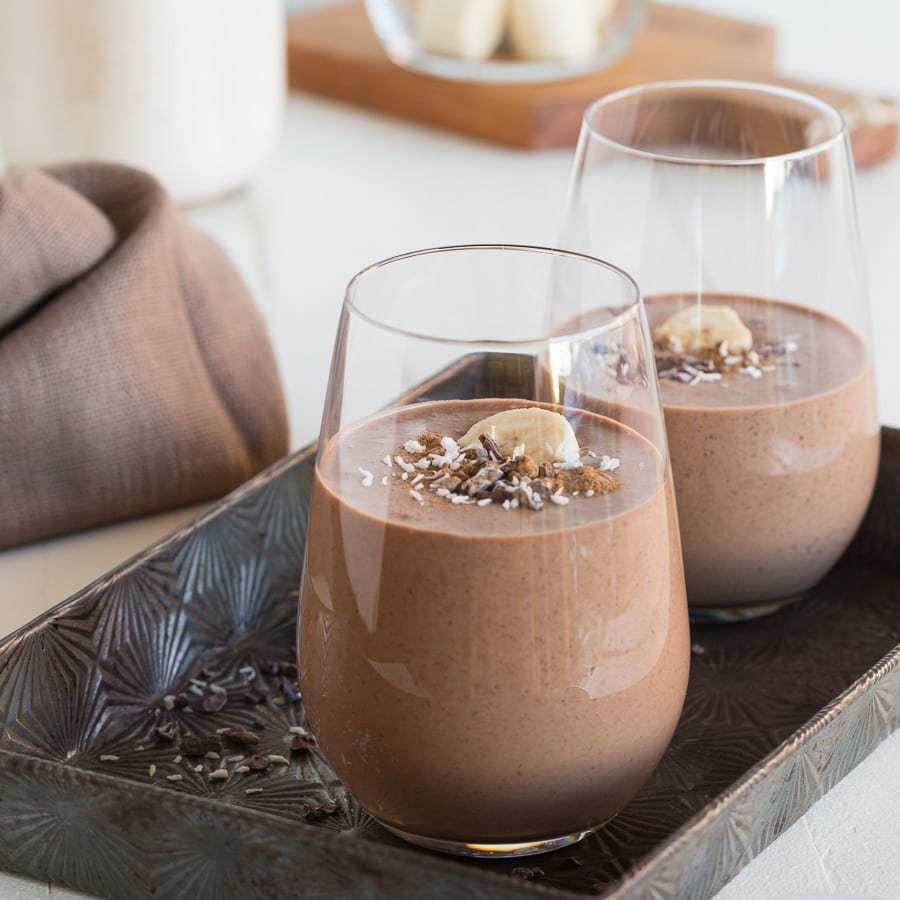
Tip #4: Add Healthy Fruit and Veggies
Phytonutrients
Colorful fruits and vegetables add lots more than nutrition and health benefits to smoothies. All of the colors and aromas are from phytonutrients: natural plant compounds that give the plants their vibrant colors and flavors. Harvard Health reports that "phytonutrients have potent anti-cancer and anti-heart disease effects". The takeaway is let's add fruit and vegetables to our smoothies.
Fresh and Frozen Fruit Options
For fruit, choose fresh or frozen frozen blueberries, raspberries, blackberries and strawberries. All are terrific low-sugar berry choices for healthy protein smoothies. Use a half cup.
Try unsweetened frozen acai berry smoothie packets and unsweetened dragon fruit puree packets with it's wild fuchsia color. All of that color is good for you!
Low Sugar Fruit
Beside berries, other low-sugar fruit options include kiwi, grapefruit, watermelon, peaches, honeydew, and cantaloupe.
If you want to use higher sugar fruit, like pineapple, mango, and banana, just be careful with the amount you use and be sure not to add sugar to the recipe.
Chef's tip: Many people love banana in smoothies because it provides creaminess but bananas are higher in sugar. Here's a banana tip: choose a greenish banana as they are lower in sugar, or use just a half. To sweeten, try monk fruit.
Vegetables and Greens
For veggie add-ins, try a handful of baby spinach leaves or baby kale leaves for greens. Chopped raw beets are terrific not to mention you'll have a gorgeous colored smoothie. Try frozen cauliflower, grated carrot or chopped cucumber.
While pumpkin is a technically a fruit, it's great in smoothies, especially in fall.
Tip #5: Fit in Some Fiber
Mom may have told you to eat your roughage, and she was right. Dietary fiber is super important and the standard American diet is woefully low in fiber. Fiber helps keep your gut happy, supports healthy weight management, and protects against cardivascular disease.
Getting the recommended 25-35 grams per day is a challenge for many people. Adding fiber to your smoothie is easy and you won't know it's there.
We use a teaspoon of acacia powder to add fiber. It disappears into the smoothie, plus it is a prebiotic. Prebiotics support a healthy gut microbiome.
Another great add on is ground flaxseed. For the best nutrition, grind 2 tablespoons fresh then add to your smoothie. Use a small coffee/spice grinder. If you don't want to bother with grinding (it's easy), try cold milled pre-ground flaxseed like this.
Tip #6: Sweetening Options
To sweeten your smoothies in a smart and healthy way, add granulated monk fruit, a little honey, maple syrup, brown rice syrup, or a chopped date. The monk fruit option gives you the lowest sugar.
Better yet, try these sugar-free monk-fruit based syrups. They are terrific and come in flavors you'll love and plain. It's my healthy go-to sweeteners these days for smoothies and more.
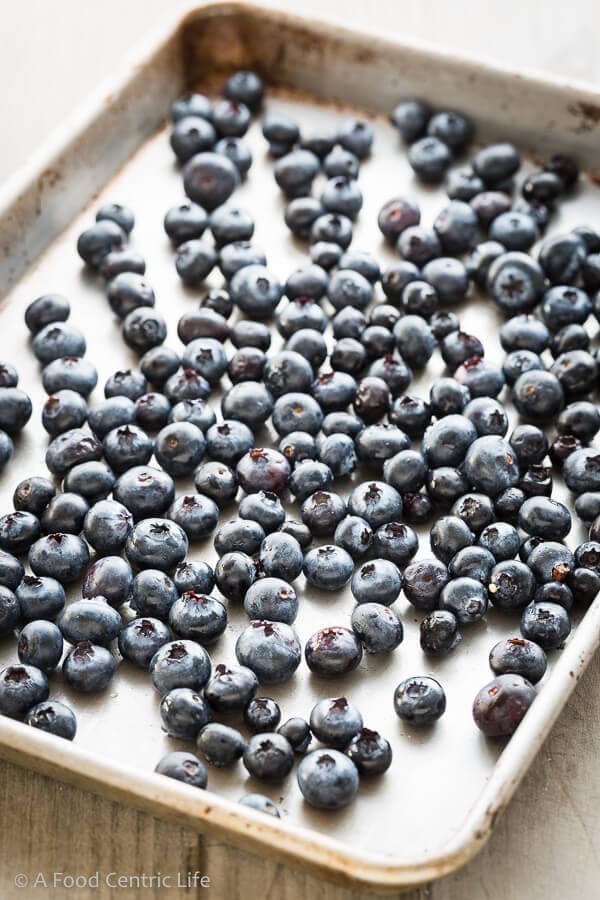
Tip #7: Use Power Add-ons
Just the few ingredients I’ve already listed make a healthy and satisfying smoothie. If you want to take your smoothie to the next level try adding superfood supplements for extra nutritional power. Here is a list of possible power add-ons:
- Acai Powder: The small, dark purple Amazonian berry (ah-SIGH-ee) that provides exceptional amounts of antioxidants, omega fats, protein and fiber, plus it’s an immunity and energy booster. We now use frozen acai packets. Find them at most markets.
- Omega 3 Fish Oil: We use an high potency brand with a light lemon taste. It disappears into your smoothie and you’ll never know its there (some taste terrible). Store it in the freezer.
- Raw organic cacao powder: A top source of antioxidants, magnesium, iron along with antioxidants, vitamins and minerals, even protein and fiber!
- Chia Seeds: Chia is a great source of healthy omega fats, protein, antioxidants and dietary fiber. It has a neutral flavor and because it absorbs water, it thickens liquids.
- Maca Powder: Maca is an adaptogen, a natural substance that works with your body to help manage stress and energy balance. This ancient Peruvian superfood was highly prized by Incan warriors to increase stamina and combat fatigue. For more on adaptogens, read here.
- Pomegranate Powder: Not only is the fruit nutritious and delicious, you can add the powder to your smoothies. It's immune-boosting, full of antioxidants, and may be great for heart health.
- Pure MCT oil: Healthy fat and great brain fuel, buy either a MCT blend or go with pure C8 oil. It has zero coconut flavor and just 1 tablespoon will do the job.
- Maqui (mah-kee) berry: this delicious, deep purple freeze dried powder is a powerhouse of antioxidants from the Patagonia area of southern Chile.
- Tart cherry powder: Evidence from published reports show cherries support lower oxidative stress, inflammation, exercise-induced muscle soreness. And of course they taste great.
- Spirulina: Nature's original superfood, a blue-green micro algae loaded with health benefits.
These extras may seem pricey, but we believe they are worth investing in because of the nutritional boost provided. Adding them really costs just pennies a day.
Chef's Tip: Why powders? Powders offer higher concentration, quicker absorption when ingesting, and are easy on the stomach, plus they make it easy to vary the flavors and health benefits of smoothies.
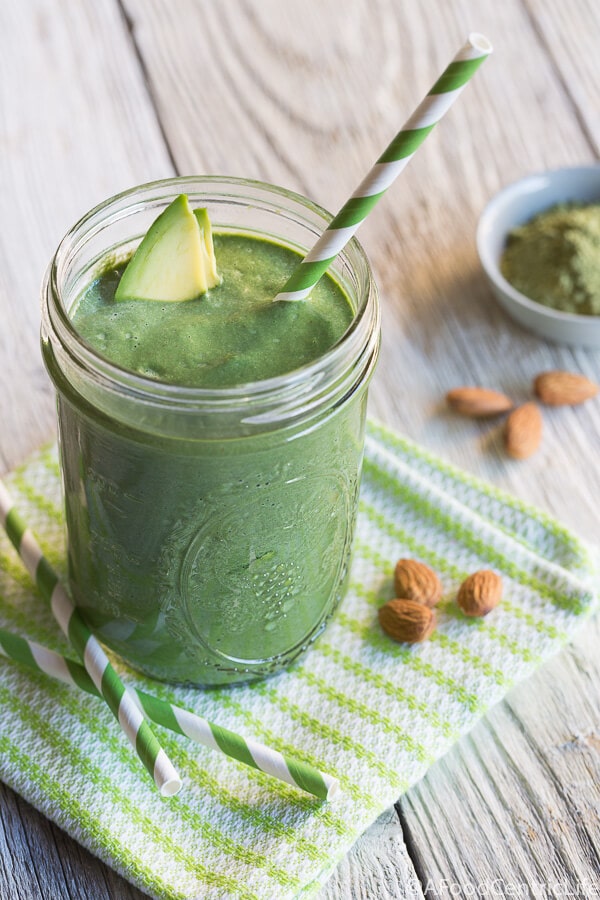
Smoothie FAQs
Making a dairy-free smoothie is easy. Start with a dairy-free base liquid such as almond milk, coconut milk, rice milk, or oat milk. For protein, choose a plant-based protein powder or egg white protein powder. Skip whey-based protein powder and any smoothie recipe using yogurt as the main source of protein as both come from milk. Making delicious healthy smoothies without dairy is easy.
They don't have to be. It depends on your recipe and what you put in them. Smoothies can be sugar bombs if you don't pay attention, or they can be low to no sugar, or no added sugar. To keep them low sugar, use low sugar fruit, use a monk fruit based sweetener, and choose an unflavored, unsweetened liquid base and unsweetened protein.
For a creamy smoothie, try adding half of a barely ripe banana, a tablespoon or two of nut butter. Adding a just a couple of ice cubes makes a smoothie silkier and of course a little cold. If your smoothie is too fluid, reduce the liquid or try a creamier base liquid. Adding Greek yogurt adds creaminess too because it's thick.
Smoothies can support a healthier eating and weight loss program. Be careful with what you add to the blender and all of the ingredient options. Use low sugar fruit such as frozen berries. Choose a plant-based unsweetened milk such as almond milk. Skip sweeteners high in sugar and use monk fruit. Try adding vegetables such as a handful of spinach leaves. Keep it simple.
More Healthy Smoothie Recipes
Whatever the season, I've got you covered with healthy smoothie recipes. For fall, the pumpkin pie smoothie is fantastic. And a green detox smoothie is always on the menu. Dessert for breakfast? Go for a chocolate smoothie to boost your energy.
⭐️Did you Make This Recipe?
Did this article help you? Please add your comment. I appreciate your feedback and enjoy hearing from you. If you loved it, please give it a 5-star rating! They really help other readers.
Originally published January 8, 2012.
📖 Recipe
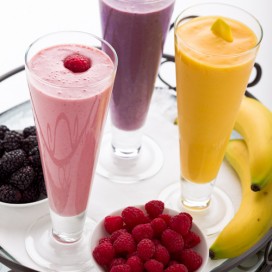
Basic healthy smoothie recipe
Equipment
Ingredients
Basic Healthy Smoothie
Base Liquids
- 10 ounces unsweetened almond, cashew, oat, other milk, or filtered water, organic soy milk, cashew or hemp milk, coconut milk.
- 1-2 scoops protein powder of choice
- ½ small greenish banana optional for creaminess
- ½ cup frozen berries, mango, cherries, etc. choose 1
- 1 teaspoon acacia fiber
- 1 tablespoon MCT or coconut oil optional
- 1 teaspoon granular monk fruit or monk fruit syrup (no sugar). flavored liquid stevia, honey, maple syrup, pitted date.
Instructions
- Blend together at high speed in a blender and enjoy right away. If it’s too thick, add a little more milk or water.
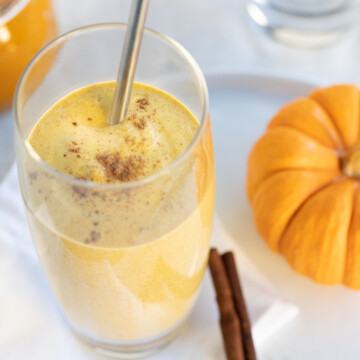
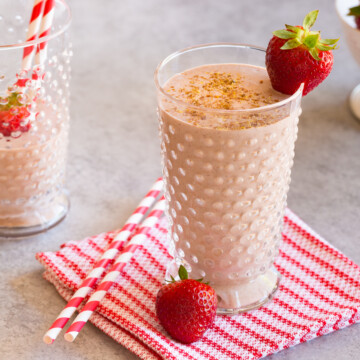
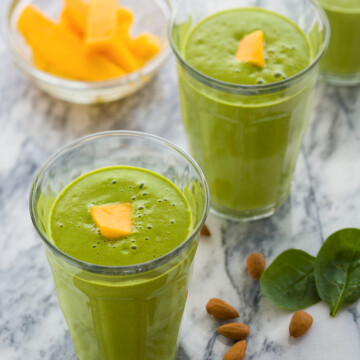
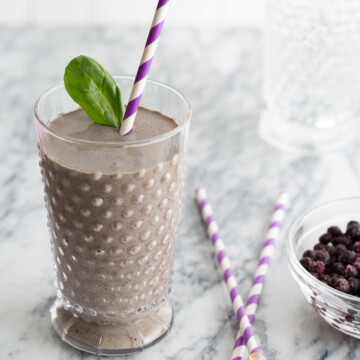
Ellie @ best blender says
Yummy! The healthy protein Smoothie looks incredible, such beautiful imagery and easy to make recipes, thank you for sharing!